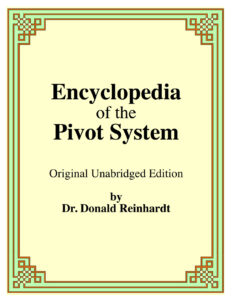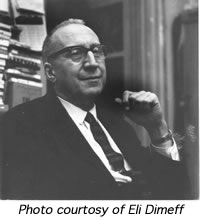Dr. Donald S. Reinhardt | Philadelphia Brass Instrument Instructor
Dr. Donald S. Reinhardt
Philadelphia Brass Instrument Instructor
 Dr. Donald S. Reinhardt (1908-1989)
Dr. Donald S. Reinhardt (1908-1989)
was a trombonist and brass teacher who maintained his teaching studio in Philadelphia when I took around five lessons with ‘Doc’ Reinhardt over a nine to ten week period beginning in early 1978. I got the impression that the substantial majority of his students over the years were trumpet players.
‘Doc’ Reinhardt was referred to me by John Perko in late 1977. John was a trumpet player who I become friends with when I attended music school at the University of Massachusetts from 1967-1972. John was not a music major. However, in 1969, I was elevated to 1st cornet/1st chair and John Perko played 1st cornet/3rd chair with the UMASS/Amherst Symphony Band. And, in 1968 and 1969, John and I played trumpet in a pickup, big ‘jazz’ band rehearsal that rehearsed at UMASS.
After I left UMASS in 1972, and ultimately went on to join various circus bands, (CLICK HERE), I contacted John in the late fall of 1977 when my tour playing lead trumpet with Ringling Brothers Circus was winding down. I told John that the Ringling Bros. Circus tour was ending in Mid-December 1977. And, I had received a commission to score the sound track of a children’s movie entitled “Circus Dream”.
I asked John if I could crash at his apartment for around 10 weeks and work on the composing and arranging the musical score for this small film. John invited me to crash at his apartment which was located in Fitchburg, Massachuseets which is about 35 miles West of Boston.
The first time I heard John practice his trumpet, I noticed an improvement in his overall skills. There was one thing that John could do that I never have heard another trumpet player do. John could start playing either a low ‘G’ below low ‘C’ or just on low ‘C’ and do a slow without pressing any valves, a slow, ascending ‘glissando’ and gradually increasing the volume, without taking a breath to ‘Double High C’. This type of embouchure control really impressed me.
After I left UMASS/Amherst in 1972, John began taking private lessons with Dr. Donald S. Reinhardt in Philadelphia. John had great success with Reinhardt’s “Pivot System” for brass instruments.
The Producer of the children’s film, “Circus Dream” lived close to Philadelphia. And, I had to travel from Fitchburg, Mass to the Producers home every other weekend to ‘plink out’ my musical scoring efforts on the film Producers
home piano.
I then went on to schedule my first trumpet lesson with ‘Doc’ Reinhardt at the beginning of 1978.
 Reinhardt had discovered the difference between upstream and downstream embouchures that became the basis for his approach that he would term the “Pivot System.”
Reinhardt had discovered the difference between upstream and downstream embouchures that became the basis for his approach that he would term the “Pivot System.”
Reinhardt identified four basic embouchure types with five subtypes and eight distinct tonguing types.
I remember two things that Reinhardt identified on my behalf at my first lesson.
1. I employed a downstream embouchure
2. I employed tonguing method number 8. I learned this ‘on my own’ at the age of 14 years (CLICK HERE)
a seldom used, but highly efficient method of tonguing. This method of tonguing is referred to as ‘K-Tonguing’ and also ‘Anchor Tonguing’ and ‘Dorsal Tonguing.
employed (but soon forgotten) and taught by turn of the 20th Century, Cornet Virtuoso Herbert L. Clarke (1867-1945). Clarke provided a detailed written explanation of this method in Clarke’s book entitled ‘Elementary Studies’ (also see – Characteristic Studies where Clarke describes his tonguing method:
“My tongue is never rigid when playing, and rests at the bottom of my mouth, the end pressed slightly against the lower teeth. I then produce the staccato, by the center of the tongue striking against the roof of the mouth.”
Doc Reinhardt expressed surprise that I utilized the H.L. Clarke method of tonguing. Reinhardt indicated that this form of tonguing was rarely employed, but he personally felt it was the ideal method of tonguing.
If I recall, Reinhardt indicated that Armando Ghitalla, Principal Trumpet with the Boston Symphony Orchestra as well as Doc Severinsen, and I think Reinhardt also mentioned Claude Gordon (who famously studied with H.L.Clarke).utilized the ‘Anchor Tonguing’ approach.
Near the conclusion of my first lesson, Reinhardt told me to go to a dentist and get a ‘full impression’ of all of my teeth (top and bottom) and to have a ‘mold’ of the full dental impression made so that a plaster cast of my teeth
could be provided to me. Reinhardt said that this was ‘super importantant’ to have completed in the event that I had either an accident or suffered some soert of disease that would cause me to lose my teeth. I completed this task, and buried away somewhere, I still have this plaster impression of my teeth.
Although I had several lessons with ‘Doc’ Reinhardt, and thought Reinhardt was quite knowledgeable about the physiological aspects of playing a brass instruments, I never was comfortable with the “Pivot System’ methodology. that ‘Doc’ Reinhardt subscribed to. In a nutshell, I found the ‘Pivot System’ to be quite confusing and not at all productive.
In the early Spring of 1978, when I was hired as lead trumpet player with the 13 piece Ringling Brothers and Barnum & Baily Circus World band in Florida, the 2nd trombone player, Bill Gibson was a successful ‘Pivot System’ student of ‘Doc Reinhardt.
A detailed description entitled, An Introduction to Donald S. Reinhardt’s Pivot System including the eight tonguing types can be viewed by CLICKING HERE.
